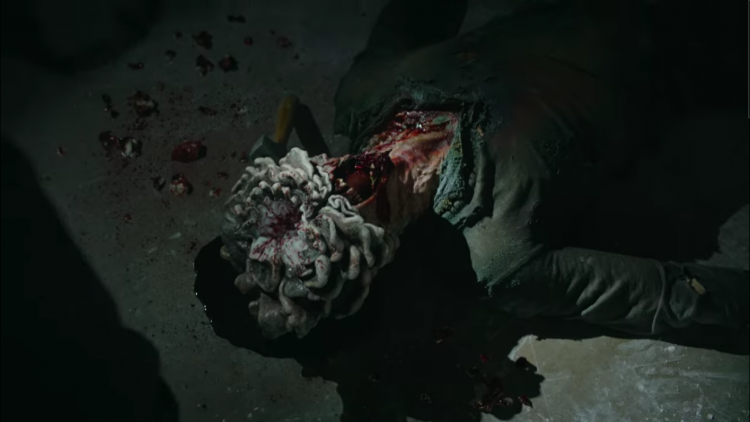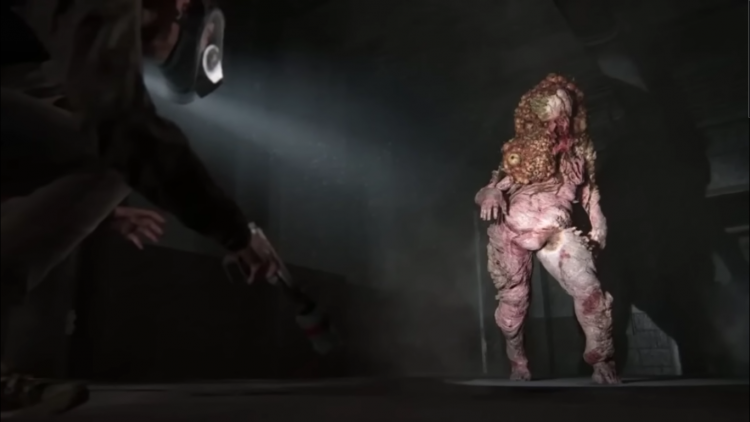Alert: Contains spoilers for The Last Of Us season 1 and the first game
The Last Of Us has taken the world by storm, cementing zombie apocalypse narratives as a mainstay of pop culture. But this particular narrative differs from The Walking Dead and Living Dead series in a key way: these zombies aren’t actually zombies in the traditional sense. That is, they aren’t animated corpses, but humans infected with a strain of fungus that causes a myriad of grotesque physical changes.
While HBO’s The Last Of Us changes a few elements from The Last of Us video game that it is adapting, most aspects of the infection remain intact. Naughty Dog based their plague on the real life Ophiocordyceps Unilateralis. Commonly known as the “zombie ant mushroom,” this organism has the terrifying effect of spreading mycelia (essentially fungal tendrils) with muscle-controlling toxins through an ant’s body, forcing it to climb to extreme heights before erupting out of the poor creature’s head and spreading spores into the wind to infect others. The Cordyceps infection in The Last Of Us does something very similar to its human hosts, following several documented stages according to how long the infection has had to take hold, each with their own monstrous adaptations.
Infected Phase 1 – Runner

The earliest stage of The Last of Us‘ Cordyceps infection is Phase 1, known colloquially by the game’s characters as “runners,” and occur within minutes to hours after exposure. As the name implies, this stage is marked by the victim’s speed and aggression. The brain-altering toxins coursing through the body enhance speed and strength, but can dull other senses, particularly the response to pain.
As this is the first stage, and since they are incredibly fast, the infection can spread through a population quickly, leading to a tendency to travel in hordes. With The Last of Us‘ Ellie as an exception, the infection is incurable and 100% fatal, so anyone seen exhibiting these symptoms is killed immediately. This stage can last anywhere from several days to several weeks.
Infected Phase 2 – Stalker

Once Cordyceps has fully infiltrated the human body, the infection reaches the second stage: “The Stalker.” In this phase, individuals no longer run through open areas looking for victims, lie in wait until they are aware of a victim. These infected prefer to ambush, waiting for the most opportune moment to strike.
Some Stalkers latch onto walls or floors and allow the fungus to fester, prying themselves free when an unsuspecting host wanders by. The Last Of Us never fully explains the reason for this change in behavior, but it is believed the purpose is to conserve resources, as the infected become less interested in eating or maintaining energy as the disease progresses.
Infected Phase 3 – Clicker

Once the infection has had a year to take root, the host enters the third, and most infamous phase: “The Clicker.” The mycelia have spread all throughout the body, but are centered in the brain. Cordyceps root here, particularly the frontal lobes, before erupting out of the cranium. Enormous fungal blooms split the skull apart, making the top half of the head appear like a hideous flower (with The Last of Us’ incredible practical effects to sell the look).
Since the growths have forced their way out of the victim’s head, the eyes have either been pushed out or consumed, leaving the Clicker completely blind. To compensate, they interact with their environment by making clicking noises and using a rudimentary echolocation. While their blindness gives living humans an advantage, Clickers are extremely sensitive to sound and have not lost their immense speed and strength, making them a dangerous threat.
Infected Phase 4 – Bloater

The most advanced form of infection seen in the show and the first game, the Bloater is an infected in whom the fungus has had several years to grow and change its host. Where Clickers are marked by the fungal blooms erupting from their heads, Bloaters are completely covered by these growths. This gives their bodies a kind of organic armor, making them impervious to most physical attacks, especially any kind of impact weapon. Melee weapons and even bullets will do very little. The years of mycelial growth into the muscles grant Bloaters immense strength, and they are able to tear a normal human to pieces with their bare hands.
On the other hand, the years of growth also make the Bloaters very slow. While their strength is terrifying, the blooms packed around their limbs limit their movements, making them somewhat predictable. In addition, as these infected have very little human flesh and are mostly mushroom, they are quite vulnerable to fire.
Alert: Contains spoilers for The Last Of Us Part II
Alternate Phase 4 – Shambler

Not seen until The Last of Us Part II, the “Shambler” is a divergent evolution from the Clicker as an alternate for to the Bloater. Often seen near water, it is believed this environment created a divergent phase more suited to these areas. While not as physically enhanced as Clickers or Bloaters, Shamblers have the ability to grapple victims and spray them with acidic spore clouds, burning them and immediately causing infection if breathed. When killed, they release a final spore cloud causing further injury and infection.
The Rat King

This is not a standard phase of the infection, but a one-off aberration created by specific circumstances. The basement of a hospital in Seattle was closed off since the start of the outbreak (over twenty years by the timeline in the game), allowing all the infected found there to fester and grow unchecked in a small enclosed space. This caused them to grow together into a single mass, a writhing amalgamation of half a dozen individuals, more like Lovecraft’s Shoggoth than anything seen before in The Last Of Us.
Colossal in size and strength, this monstrosity is essentially every phase of the infection rolled into one, with the speed of a Runner, the senses of a Clicker, and the strength of a Bloater. Additionally, as the creature is attacked, individuals can split off and attack in concert, seemingly communicating through a hive mind. Truly the stuff of nightmares, with creatures like these running around it’s a wonder Pedro Pascal’s Joel survives The Last Of Us at all.
Read Next: Bloaters Explained: What That Giant Infected Is In HBO’s The Last of Us
 Follow Us
Follow Us




